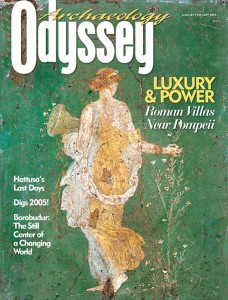How We Know What We Know: The Hittite Archives
Sidebar to: The Last Days of Hattusa

The Hittites were perhaps the world’s first historians. On numerous clay tablets recovered largely over the last century by archaeologists, they wrote down what we today recognize as history, rather than merely relating myths or the acts of the gods.a Much of what we know about the Hittites, therefore, comes from the pen (or stylus) of the Hittites themselves.
The earliest excavations on the site of Hattusa were conducted by the German archaeologist Hugo Winckler in the first decade of the 20th century. They brought to light thousands of tablets, often fragmentary, from Hattusa’s palace and temple archives. A total of eight languages are represented in the tablets, all inscribed in the cuneiform script developed in Mesopotamia around 3000 B.C.
Many of the tablets found at Hattusa are written in Akkadian, a Semitic language used by the Babylonians and Assyrians. During the Late Bronze Age, Akkadian also functioned as the international language of diplomacy; many of these tablets are thus correspondence between Hittite kings and their vassal states in Syria or foreign kingdoms (such tablets have also been found, for example, at Tell el-Amarna, Egypt, site of the pharaoh Akhenaten’s capital).
Already a library member? Log in here.
Institution user? Log in with your IP address.

